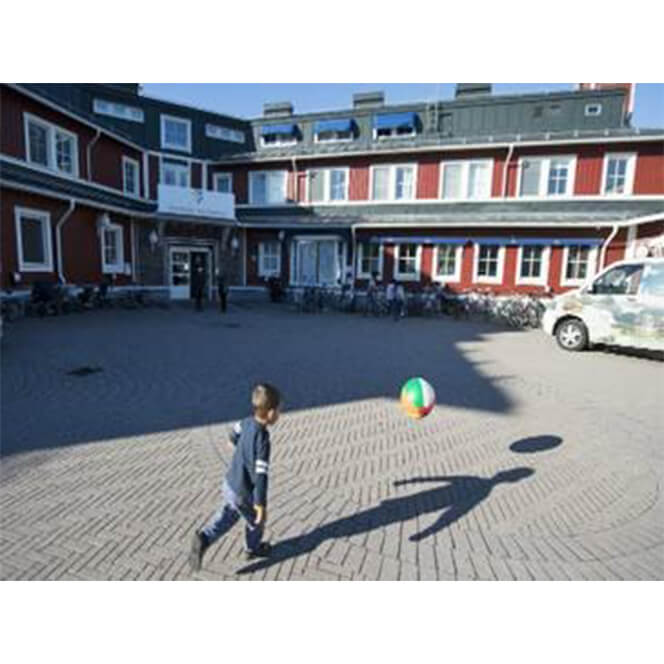How, and in what ways, can a focus on cities tell us something about recent developments in the governance of displaced migration?
Our four urban areas of Malmö (Sweden), Cosenza (Italy), Nicosia (Cyprus) and Glasgow (Scotland) are broadly comparable in size but differ in terms of ground-level politics, local strategic networks, and economic resources. In their approach to housing for refugees and asylum seekers, we find that settlement processes are especially characterized by forms of horizontal partnerships. In this respect, and on some occasions, national level intransigence has been thrown into sharp relief by municipal, local or city level initiatives that have arisen over the short and the long-term.
What is short term and what is long term in local accommodation are not questions that stand apart from the macro level migration governance. In our findings, accommodation is also used as a deterrent for migration rather than as a facilitator of incorporation or integration. The location and quality of accommodation, the racialized nature of its provision or refusal, and temporary tenure of contracts and forced evictions speak to this tendency.
These experiences are uneven. In Consenza, asylum seekers and refugees are initially housed in ‘extraordinary reception centres’ (CAS) and then moved into the SPRAR (Protection System for Asylum and Refuge Seekers) network, a bottom up approach made of projects that collaborate with the third sector, private sector and local authorities, and which includes labour market initiatives. Launched in 2002, the ‘SPRAR model’ – currently facing political challenges as detailed in our project report – relies on a network of local authorities that have access to the National Fund for Asylum Policies and Services (FNPSA).
The networked and fragmented approach contrasts with a Swedish system in Malmo where asylum seekers choose either to stay in ‘Facility Accommodation’ arranged by the Swedish Migration Agency, or in ‘Own Accommodation’ arranged by the asylum seeker. People in the Facility Accommodation are transferred from the Swedish Migration Agency run accommodation in the reception system of a municipality. In 2016, the Swedish government introduced a Settlement Law in order to encourage the geographical dispersal of refugee reception, making it mandatory for municipalities to receive and organise accommodation for a specified number of refugees.
This dispersed approach is most keenly observed in our Scottish case where in Glasgow, as in the rest of the UK, there exists a two-tier system for the accommodation of displaced adult migrants. Those who are accommodated as part of the Dispersal Scheme, and those who are part of the Vulnerable Person Resettlement Scheme (VPRS). Here, the accommodation provision available through the Dispersal Scheme has created competing and complex governance interests that are exacerbated where multi-level governance at the Scottish level comes into conflict with UK-level welfare restrictions and immigration rules.
In Nicosia in Cyprus meanwhile, the growing needs of an increasing asylum seeking population continue to be insufficiently tackled by the state. The vast majority of applicants appear unable to secure shelter at the Kofinou Reception and Accommodation Centre, and are instead dispersed throughout the island. Asylum seekers’ only real state option for accommodation tends to be the Reception Centre in Kofinou, the only one of its kind on the island, which was initially designed as a place of temporary residence until more suitable and long-term accommodation could be found. At present, the Reception Centre is currently full, so families with young children and people with complex needs are forced to sleep in public spaces.
Looking across our city cases we find that successful approaches are those that span both ‘mode one’ (reception and arrival) and ‘mode two’ (long term settlement) accommodation. If accommodation is to become a home, however, then this requires a joined up approach with labour market participation and other spheres (including the civic sphere through language support). At present the two tier approach undermines the whole system because of the social problems it exacerbates rather than addresses.
Equally, we should be wary of dispersal solutions. These (1) create systemic complexity that adversely affects asylum accommodation provision, (2) simultaneously pressurises and disenfranchises service providers at the local level, and (3) creates hierarchies of engagement and representation that inhibits successful multi-level governance.
Currently, none of the governmental stakeholders are central to existing provision across the cases. Much of the effort of management weighs on the capacity of third sector associations and NGOs to create networks with private actors, with the support of the public administration. A prominent concern is that the practice of contracting private companies to provide public services in the area of accommodation is far too asymmetrical: contracts allow profit taking at the expense of taxpayer and the refugee, nor are they in the pursuit of efficient service delivery.
Finally, it is worth reminding ourselves that not all of these challenges are about migration. The unsatisfactory housing situation among asylum seekers and refugees mirrors a more general situation with a shortage of affordable housing. So, to some extent, addressing the latter would also address the former.

